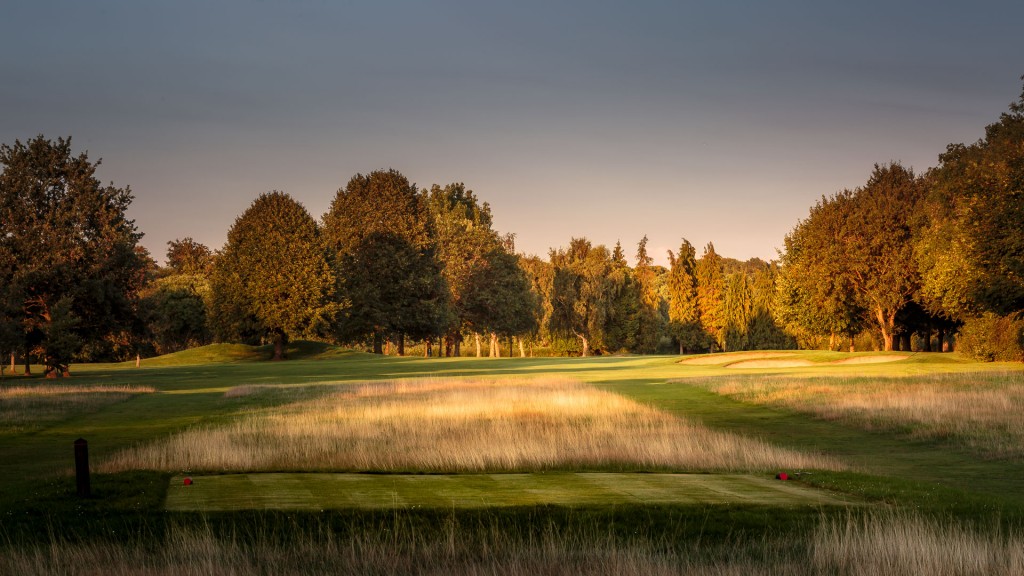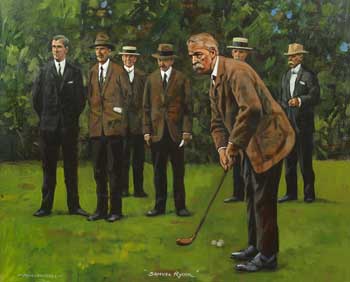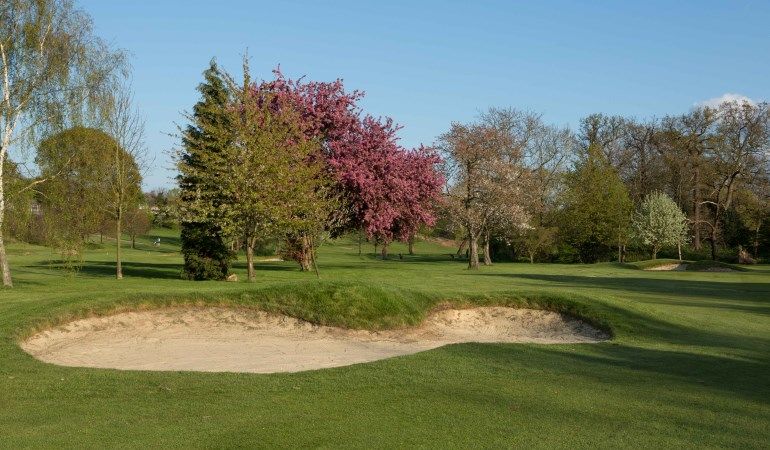James Braid – The Great Courses
Golf North and Golf South websites are delighted to be promoting the finest selection of James Braid designed golf courses from around the world.
James Braid (6 February 1870 – 27 November 1950) was a Scottish professional golfer and a member of the Great Triumvirate of the sport alongside Harry Vardonand John Henry Taylor. He won The Open Championship five times. He also was a renowned golf course architect. Braid is a member of the World Golf Hall of Fame.
Braid was born in Earlsferry, Fife, Scotland, the son of James and Mary (née Harris). He played golf from an early age, working as a clubmaker before turning professional in 1896. Initially his game was hindered by problems with his putting, but he overcame this after switching to an aluminium putter in 1900. He won The Open Championship in 1901, 1905, 1906, 1908 and 1910. In addition, Braid won four British PGA Matchplay Championships (1903, 1905, 1907 and 1911), as well as the 1910 French Open title. He was also runner-up in The Open Championship in 1897, 1902, 1904, and 1909. His 1906 victory in The Open Championship was the last successful defence of the title by a European until Pádraig Harrington replicated the feat in 2008.

Henley is a traditional members club. The course is situated in tranquil countryside with expansive views of the Chiltern Hills, just a few miles from the M4 and the M40. It is widely acknowledged as one of the best clubs in the area. The golf course is in Oxfordshire, although it is very near to both the Berkshire and Buckinghamshire borders, all three counties can be seen from the course.
Located in an area of outstanding natural beauty, some five minutes from Henley-on-Thames, the course benefits from the natural drainage of a course built on chalk.
Henley Golf Club was first thought of in 1905 by a small group interested in enhancing the town’s status as it grew as the Great Western Railway expanded.

In May 1905 70 acres were purchased and 9 holes opened in 1907 with a further nine opening the following year. Mr D Stephenson, the then Professional at Princes Golf Club and formerly of Huntercombe (opened 1901) prepared plans, but James Braid is correctly credited with its design, as yardages of the course that opened bore no resemblance to the original plans. Braid was paid £15 6s 6d (£15.321/2) and Stephenson £5 for their efforts.
The match to celebrate the opening of the course took place on the 16th May 1908 between James Braid and Rowland Jones (he replaced Harry Vardon who cried off as he had flu) refereed by Harold Hilton, twice Amateur Champion and twice Open Champion as an amateur. Braid scored a 77 in the morning round and 74 in the afternoon, beating Jones, both rounds taking two hours to play!
Over the years the course has changed, the 11th for example used to cross the road and was 320 yards in length – this was the case till 1964 when, due to increased traffic on Chalk Hill, the hole was changed to its current position.

Some holes have been lengthened as technology improved. During the period from 1998 till the present day, new Health and Safety requirements have been taken into account realigning holes 3, 9, 10 and 18 to keep stray balls away from roads. All the work carried out on the course e.g. reshaping of bunkers, is now done in the style of James Braid by our own green keepers. A full watering system was installed in 2004.
Fully refurbished in 2004, the clubhouse is a veritable haven of relaxation, with a first class reputation for a friendly, warm welcome. Relax in comfortable surroundings, retrospectively counting the shots you could have saved, with family, friends or colleagues.
Soft drinks, fine wines, great beer and classic spirits are available to accompany the fine food on offer, from delicious homemade bar snacks to more extensive, but still homemade, fayre in the restaurant.

The clubhouse is ideal for societies or corporate away-days, yet intimate enough to accommodate a member’s family celebration.
We are also proud to be the home of The Association of James Braid Courses.
Formed some five years ago by one of our Past Captains and Past President, the Association now has 269 member clubs of the some 411 courses James Braid either designed originally or altered (of the 411, 39 are defunct and 6 were plans only).
The courses are to be found in Ireland, Wales, England and Scotland with one in New York. Henley Golf Club members and members of all the clubs in the Association can enjoy preferential green fees at these courses, by booking in advance.
The list is updated each year with new member clubs.
Visit the Henley Golf Club website. Read more.

The Club was formed in 1905 and took a five-year tenancy of the Park of Sopwell House, owned by the Earl of Verulam. Originally, it was a nine-hole course with a small clubhouse erected on a site which is now the 17th tee. In 1909 the Club took a 21-year Lease on further land comprising 136 acres, which allowed the development of a full 18 hole course.
The services of the great golf course designer James Braid were commissioned for the lay-out of the course containing seventy acres of fairways. The formal opening of the new course was on 27th April 1912 when Samuel Ryder was Captain. An inaugural match was played between James Braid and the then Open Champion, Harry Vardon, who won with a score of 74.

Before the end of the year, the membership was almost full, with an entrance fee for gentlemen of two guineas and a subscription of five guineas. A visitor could play a mid-week round for one shilling and six pence.
Many things have changed since that time but the course still provides as stern a challenge now as it did in those pioneering days at the start of the 20th century!
Visit the Verulam Golf Club website.


Crowborough Beacon Golf Club members and members of all the clubs in the Association can enjoy preferential green fees at these courses, by booking in advance.
- Please click here to view the list of member Golf Clubs as well as the booking procedures
- And to view a map of the courses currently included in the Association click here
A reference to Crowborough Beacon is made within “James Braid and his Four Hundred Courses” (see above image) and for those interested in this book, copies are available from either golf@grantbooks.co.uk or mail@verandahbooks.co.uk.
Visit Crowborough Beacon Golf Club website. Read more.

Designed in 1895 by James Braid and Harry Vardon, Bush Hill Park is a course that has stood the test of time. The course has a reputation for being the best maintained in the area, with fast greens and regular course improvements. Members are allowed to share this with guests for discounted members’ guest green-fee rates.
Visit the Bush Hill Park Golf Club website.

Sundridge Park is proud to be a member of The Association of James Braid Courses. This collection of courses, mainly throughout Ireland, Wales, England and Scotland, were designed, re-designed or re-bunkered by the renowned golf course architect, James Braid.
If you are a member of a club in the Association of James Braid Courses you can enjoy preferential green fees, by booking in advance.
- £45 (weekdays only, ex Bank Holidays)
Fact – James Braid hit the opening tee shot from the 1st Tee when the club opened for play in 1903 and the ball he used is on display in the club’s trophy cabinet – read more of our Heritage
Visit the Sundridge Park Golf Club website.

Sherwood Forest Golf Club a long established heathland course alongside the pines, silver birch and oak trees of Clipstone Woods within the legendary Sherwood Forest.
We are very proud of our reputation as one of the oldest and finest heathland golf courses in Great Britain and are currently rated 84th best in the British Isles and 47th in England. The course was intially designed by Harry Colt and subsequently enhanced by James Braid.

The English Golf Union, when staging the 2006 England Boy’s Amateur Stroke Play Championships, described Sherwood Forest Golf Club as being ‘in a league of its own’. As a premier course the club has hosted many national competitions over the years, including the ‘British and English Seniors’ and regional qualifying for the ‘Open Championship’.
We welcome you as a possible future visitor to Sherwood Forest Golf Club. For bookings or reservations, please use our Enquiry Form , contact the Golf Professional on (01623) 626689 or for more information please click here .
Visit the Sherwood Forest Golf Club website.

Situated just inside the M25 (accessible from either Junction 24 or 25), Enfield is a picturesque, parkland course within easy reach of all parts of North London, Hertfordshire and Essex. Its features include tree lined fairways and superb greens; Salmons Brook, which winds its way through the heart of the course and the Moat, which is an ancient English Heritage site at the back of the 17th green.
Designed by former Open Champion, James Braid, the course measures 6174 yards, par 72 for men and 5407, par 71 for ladies. It is a good test for all levels of Golfer. The warm welcome that you will receive, along with the superb food from our resident Head Chef, Andrea Thornton, and the excellent Clubhouse and Bar facilities will ensure that your stay here, whether for a day or many years, will always be enjoyable.
Visit the Enfield Golf Club website. 125 Anniversary BrochureRead more.


Orignally designed by legendary golfer, James Braid, in the 1920’s, Budock Vean Hotel‘s challenging golf course is set in mature parkland and is playable throughout the year.
Budock Vean Golf Course was originally planned to be an 18 hole course, and we still have Braid’s initial designs for this. But due to the sale of some of the land in the 1920s, the BV course ended up as a 9 hole/18 tee course, but is often cited as the best 9 hole course in Cornwall.
As an Association of James Braid course, we offer £10 discount for Braid members off our standard round cost of £25.
Visit the Budock Vean website. Read more.

Rochford Hundred Golf Club, one of the premier member clubs in Essex with quite possibly the oldest clubhouse in the world of golf, the former home of the Boleyn family dating back to 1515. This year sees major investment with the refurbishment of our men’s showers and changing rooms together with our convivial Spike Bar, all scheduled to be completed by the end of April.
The club itself was established in 1893 with our James Braid designed parkland course which offers a stern but very pleasurable challenge. Visitors and Societies are very welcome for Golf, or casual visitors are also welcome to enjoy the hospitality of our historic clubhouse.
Visit the Rochford Hundred Golf Club website.

Golf has been a fixture at Littlestone since 1888. Although challenging enough to host the first L.G.U. Ladies Championship in 1894, the Club’s first Captain, William Laidlaw Purves, along with the professional David Herd, designed a course which covers much of the same ground as the links we now play. Purves was a member and the designer of Royal St Georges at Sandwich.
The new course was recognized as one of the premier links in the UK. Charles Blair Macdonald, a founder of the United States Golf Association, an evangelist for the game in the U.S. and the designer of many of the early, great courses in America, visited Great Britain in 1902 and again in 1904. He visited Littlestone, Prestwick, Hoylake, Deal, Sandwich and other well-regarded courses in the UK. What he saw at Littlestone inspired perhaps his finest hole on what has been called his finest course – the 4th hole at the Lido Golf Club. Macdonald said “The fourth hole at the Lido I consider the finest two-shot hole in the world of golf, but fully 90 per cent of golfers will have to play it as a three-shot hole. I absorbed the idea from the sixteenth hole at Littlestone…”
Soon after the opening, James Braid, at that time the professional at Walton Heath, was brought in to place bunkers on what was mostly a bunker-less course. His improvements can still be seen on several holes – the great fairway bunker on #12 and the array of cross bunkers on #16 are fine examples of his work. Braid’s contribution added to Littlestone’s reputation and in 1910, Bernard Darwin in his classic book, Golf Courses of the British Isles, richly praises the course.
After The Great War, the club worked to repair the damage brought by neglect and military activities on the site. In 1924, the club contacted Alister MacKenzie, a well-regarded golf course architect and designer of Alwoodley Golf Club, who would later relocate to the US and design two masterpieces there, Augusta National & Cypress Point.
MacKenzie visited Littlestone in 1924 and presented the club with an extensive list of improvements. Some of his suggestions were implemented immediately and others over the years. But it’s clear that much of the greatness on the course is directly attributable to his genius: two excellent par 3s, the 6th & 17th; the 5th green; the 8th hole; the 18th green.
The course has remained nearly unchanged since MacKenzie’s time with the exception of some tee relocation to add length. Several new tees were added in 1997 – the 4th, 7th, 9th, 11th & 12th holes – to better challenge the stronger player, especially during Open Qualifying. Still, the feeling of golf history can be experienced at Littlestone. The club is a member of the MacKenzie Society and takes pride in furthering the spirit of links golf.
Visible from the 17th tee is the only remaining evidence of the time when this “delightful course” was “in the heart of the greatest shooting gallery the world has seen” (Henry Longhurst ‘Shooting Gallery’) It is a section of the Mulberry Harbour, which did not make it across the Channel following the D-day landings of June 1944.
To play golf at Littlestone is to step back in time and to enjoy links golf at its best.
Visit the Littlestone Golf Club website.

David James Photography
Yelverton Golf Club, in South Devon, is a delightful moorland course designed by Herbert Fowler and updated by James Braid. It incorporates some of the old mine workings, and leats, as natural hazards to challenge golfers of all standards and has outstanding views across Dartmoor and over Cornwall. The course has been host to many top quality competitions, including the EGU Men’s Senior Amateur Championships in 2006.
We are a friendly club and have availability for new members, societies and golfers on holiday in the Devon area, who want to play at one of the best moorland golf courses in England. There are several friendly groups to join at different times of the week and we encourage our new members to join these groups to meet our existing membership, eg. Ladies section, Vets section, Pounders section.
The Clubhouse is open to the public, and we also welcome ramblers, cyclists and other groups that want to enjoy our excellent food & beverages. We can also cater for birthday parties, weddings, christenings and many other special occasions.
We look forward to welcoming you to our golf course and clubhouse.
For more information please contact us at:- info@yelvertongolf.co.uk, 01822 852824



